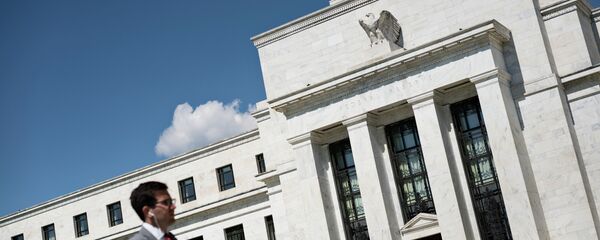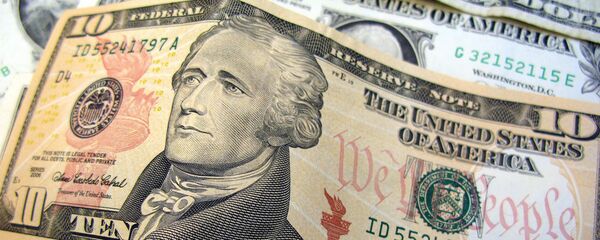Kristian Rouz – The pace of US GDP expansion in the first three months of this year was its slowest since the first quarter of 2014, with consumer spending having slowed significantly amid lower car sales and utility receipts.
The pace of US economic growth in 1Q17 stood at 0.7pc year-on-year, according to a report released by the Commerce Department on Friday. This is the slowest pace of GDP expansion in three years, with the US economy having contracted by 1.2pc in 1Q14. In the fourth quarter of 2016, the economy expanded by 2.1pc, but in Q1, consumer spending alone rose only a dismal 0.3pc, its worst reading since 2009.
The Commerce Department report provides further evidence that despite the recent pickup in investor sentiment and business activity, boosted by President Donald Trump’s business-friendly attitude, the broader US economy is still living in an Obama-era reality. In the recent years, the economy has typically slowed down dramatically in the first quarter of the year, due to seasonal factors such as bad weather hurting consumer spending.
"US GDP figures are typically weaker in the first quarter, so this reading is in line with the seasonal trend," Nancy Curtin of Close Brothers Asset Management said.
This trend reflects the weakness of American manufacturing, despite it starting to take off in recent months. Such a heavy reliance of the broadest GDP measure on the weather is a sign of an economy ravaged by severe deindustrialization.
"We haven't yet had the expected fiscal stimulus from Trump, the effects of which may not be seen until the end of this year or the start of 2018," Curtin said.
Indeed, Trump’s one-page tax plan, which cuts both business and individual income taxes dramatically, will take a while to pass through Congress, with its effects passed on to the broader economy one or two quarters after the reform’s implementation.
“There’s reason to think that some of the things that were weak in the first quarter should reverse in the second quarter, in particular consumption and inventories,” Michael Feroli of JPMorgan Chase & Co. said. “Labor income is starting to pick up and is actually keeping consumer spending pretty well supported.”
Again, this viewpoint reflects the retroactive dynamics in the US economy. In the past several years, a dismal low or negative expansion in the first quarter was typically followed by a solid rebound in the second quarter.
Currently, the US economy is on track to expand by 2.8pc in the current quarter, according to consensus expectations on Wall Street. Even though the first quarter was not that great, the expansion was mostly driven by private sector investment, which is a healthy development.
The main driver of economic growth in Q1 was fixed non-residential investment, adding 1.12pc to the GDP, led by the expansion in mining and oil drilling. Business spending in the residential segment added another 0.5pc to the economic growth. Foreign trade added 0.07pc after subtracting 1.82pc in 4Q16, reflecting the narrowing US trade deficit and the rebound in exports.
However, there were too many drawbacks to the GDP as well. Inventory dynamics slashed 0.93pc off the first-quarter GDP, after having added 1.01pc in 4Q16. Household consumption drives some 70pc of the US economy, and its very weak expansion, by just 0.3pc in 1Q17, determined the overall pace of growth.
Meanwhile, inflationary pressures are mounting in the US economy. The GDP price index gained 2.3pc in Q1, which is above the Federal Reserve’s 2-percent inflation target. This means that while the US economy might be tumbling into a period of stagflation, the central bank still has the opportunity to continue raising base interest rates, making fiscal stimulus an urgent necessity.
Real disposable incomes advanced at their slowest since 2013, at 1pc gain, which is well below inflation. Another problem is, whileUS unemployment is at the decade’s lowest at 4.5pc, this perceived labor market strength is still failing to translate into gains in salaries and wages.





